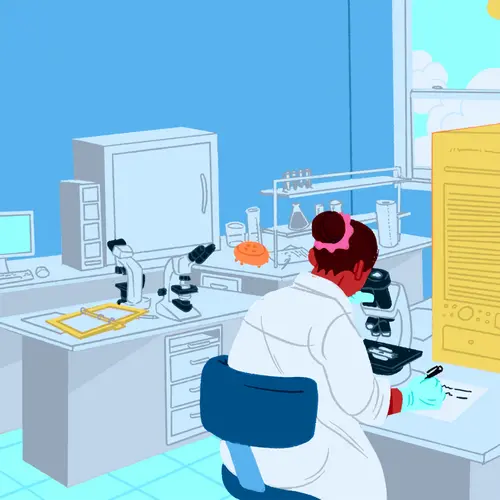A stem cell transplant, also called a bone marrow transplant, is a way to put healthy stem cells into your child’s body so it can grow new bone marrow. They may need one if they have a certain type of cancer, blood disorder, immune disease, or bone marrow syndrome. Some examples are leukemia, lymphoma, neuroblastoma, and sickle cell disease.
The body needs stem cells to fight infection. The transplant lets doctors use high doses of chemotherapy to destroy bone marrow, where some diseases start but also where new stem cells form. After the chemo, a stem cell transplant restores healthy, blood-forming cells to the bone marrow.
There are two types of stem cell transplants, autologous and allogeneic. The type your child will have depends on their specific medical condition and whether there’s a donor. This can be any volunteer whose cells “match” your child’s. It’s often a brother or sister.
- Autologous. This type uses your child’s own stem cells. They’re collected, then frozen and stored in a special lab. After chemo, and in some cases radiation, doctors use an IV to put them back into the blood.
- Allogeneic. In this type, the donor is someone else. The more closely the donor’s cells match your child’s, the less chance there is of problems with the procedure.
Transplant Process Timeline
A stem cell transplant is a complex process that may take months.
The day of the transplant is called “Day 0.” The days leading up to Day 0 are “Day -30,” “Day -29,” and so on. The days after are “Day +1,” “Day +2,” etc.
Preparation
Your child will need several appointments with their transplant and care teams in the weeks before Day 0.
- The primary transplant doctor or member of the transplant team will talk to you about the procedure and its benefits and risks.
- Your child will have blood tests, X-rays, and other imaging scans.
- Stem cells from your child or your child’s donor will be collected and stored.
- A central line IV may be inserted to give your child chemotherapy and medications. Your child will be sedated for this procedure.
Resources may be available to help your child and your family manage any stress during this time. Ask one of your child’s doctors or nurses or a social worker at the hospital for information.
Admission to the Hospital
Your child goes into the hospital 1-3 weeks before Day 0 to start conditioning therapy.
This treatment gets your child’s immune system ready for the transplant. It can include chemotherapy, immunotherapy, and radiation. It depends on your child’s medical needs and the type of transplant they’re having.
Conditioning therapy has several goals:
- To kill cancer cells in children with cancer
- To kill normal cells in the bone marrow so the new marrow can take over
- To tamp down the immune system in children who get cells from another donor, so it won’t reject them
Day 0
On the day of transplant, your child will get medications to help their body accept the new stem cells. They’ll get both through the IV.
It doesn’t hurt and they’ll stay awake during the process. It’ll happen in the hospital room with members of the transplant and care teams there to watch them.
Side Effects
Most children have side effects from the conditioning therapy and transplant. These may include:
The care team will watch for any problems and treat them if needed.
Risk of Infection
Conditioning therapy weakens the immune system so the transplant can work, but that raises the chance of infection. To prevent or treat this, your child will get medications and blood products through an IV.
If they get stem cells from a donor, they’ll also get medications to prevent graft-versus-host disease (GVHD), which can happen if the body rejects the new immune system. These medications also make infection more likely, though.
Engraftment
After the transplant, your child will stay in the hospital for about a month while the care team looks for signs of engraftment. This is when the transplanted stem cells are making enough white blood cells to help protect against infections.
They’ll do this by looking at both the number of white blood cells and neutrophils, a certain type of white blood cell that fights fungi and bacterial germs.
Going Home From the Hospital
Most children can go home from the hospital about a month after engraftment, as long as there is no infection or other complication. They also should be able to eat well and take their medications at home.
They’ll still have a high chance of infection for 3 months to a year. School and other places might be off-limits. They’ll have checkups several times a week to make sure everything’s OK.
For most children, things start to get back to normal around Day +100. That’s when they should be able to take less medication and have fewer checkups. The medical team will help them transition back to regular activities.

